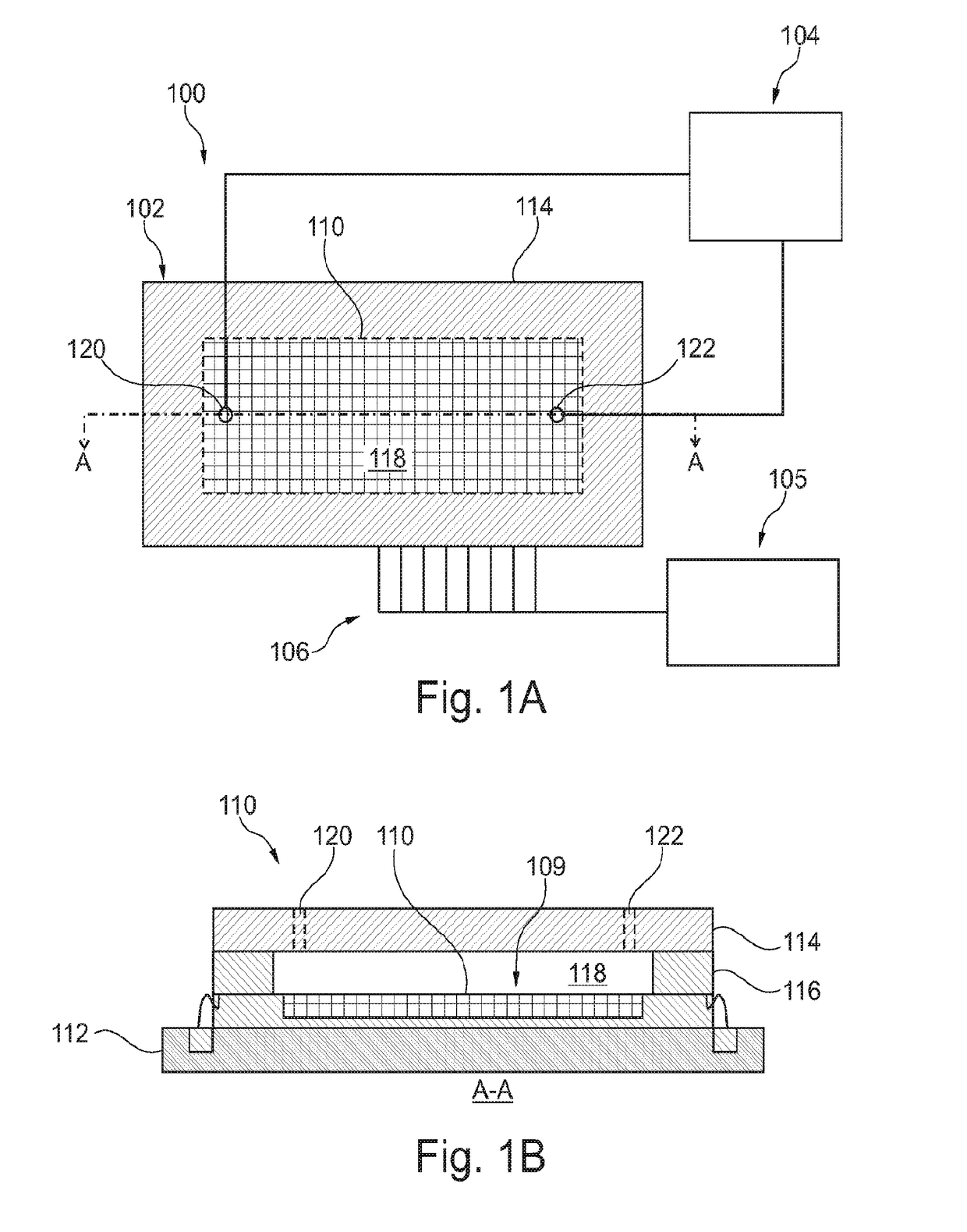Systems and methods using magnetically-responsive sensors for determining a genetic characteristic
a technology of magnetic resonance and genetic characteristic, applied in the field of systems and methods using magnetic resonance sensors for determining genetic characteristics, can solve the problems of complex, expensive, bulky, and current next-generation sequencing system based on sequencing-by-synthesis (sbs)
- Summary
- Abstract
- Description
- Claims
- Application Information
AI Technical Summary
Benefits of technology
Problems solved by technology
Method used
Image
Examples
Embodiment Construction
[0305]The methods described herein can be used in conjunction with a variety of biological or chemical analysis techniques, including nucleic acid sequencing techniques. Embodiments may be used to determine a genetic characteristic of a sample based on changes in electrical resistance that occur as a nucleic acid strand is grown. Particularly applicable techniques are those wherein the biological or chemical samples are localized at designated positions such that their relative positions do not change during analysis. For example, nucleic acids may be attached at fixed locations along a substrate surface during a designated protocol in which the array is repeatedly scanned. Embodiments in which impressions are obtained with different channels, for example, coinciding with different labels used to distinguish one nucleotide base type from another, are particularly applicable. In some embodiments, the process to determine the nucleotide sequence of a target nucleic acid can be an auto...
PUM
| Property | Measurement | Unit |
|---|---|---|
| height | aaaaa | aaaaa |
| height | aaaaa | aaaaa |
| height | aaaaa | aaaaa |
Abstract
Description
Claims
Application Information
 Login to View More
Login to View More - R&D
- Intellectual Property
- Life Sciences
- Materials
- Tech Scout
- Unparalleled Data Quality
- Higher Quality Content
- 60% Fewer Hallucinations
Browse by: Latest US Patents, China's latest patents, Technical Efficacy Thesaurus, Application Domain, Technology Topic, Popular Technical Reports.
© 2025 PatSnap. All rights reserved.Legal|Privacy policy|Modern Slavery Act Transparency Statement|Sitemap|About US| Contact US: help@patsnap.com



